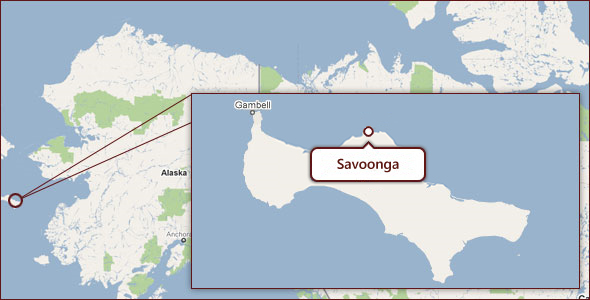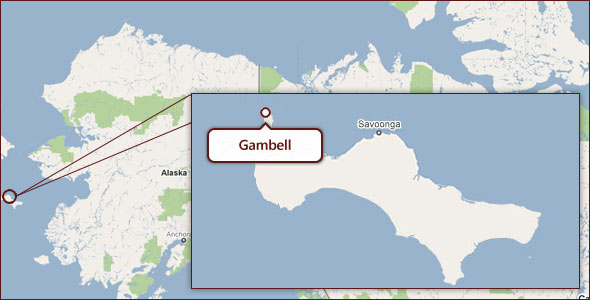
St. Lawrence Island, or Sivuqaq in Siberian Yupik, lies in the northern reaches of the Bering Sea, 164 miles west of Nome. There are two communities on the Island, Savoonga and Gambell. Savoonga is on the northern coast and has about 700 residents while Gambell lies on the northwest cape with about 600 residents.

St. Lawrence Island is thought to be one of the last above-water remnants of a land bridge connecting the new and old worlds that once allowed migrating peoples from Asia to enter North America. The people of St. Lawrence Island share lineage and a Siberian Yupik common language with their Russian neighbors on the opposite side of the Bering Strait. Most residents of St. Lawrence Island are bilingual. In fact, many of the older generation speak Siberian Yupik as their first language, although with each generation English is becoming more prominent.

View from the back porch of the Gambell hostel
Subsistence hunting is a way of life on St. Lawrence Island. Each spring and fall crews set out to sea in search of seal, walrus and whale. While modern implements and technology have in many ways changed subsistence hunting, the principles behind and importance of the hunt remain unchanged. In addition to hunting, gathering greens, picking berries and scouring for bird eggs are a part of everyday life on the island. Subsistence life on St. Lawrence Island is an example of true sustainable living, with every part of the animal being used- the meat and fat for food, skin for clothing and the walrus tusk for carving - just to name a few.
Siberian Yupik artists create some of the most exquisite carvings in ivory and whalebone. Traditional subjects include the animals that are a vital part of life on the island, such as whale, walrus and seal, as well as scenes depicting hunting, gathering and family. In addition to these more traditional subjects, contemporary pieces in ivory and whalebone are emerging. The common link found throughout Siberian Yupik art are the connected relationships among men, animals and the environment.
VIEW WORK FROM ST. LAWRENCE ISLAND HERE.






